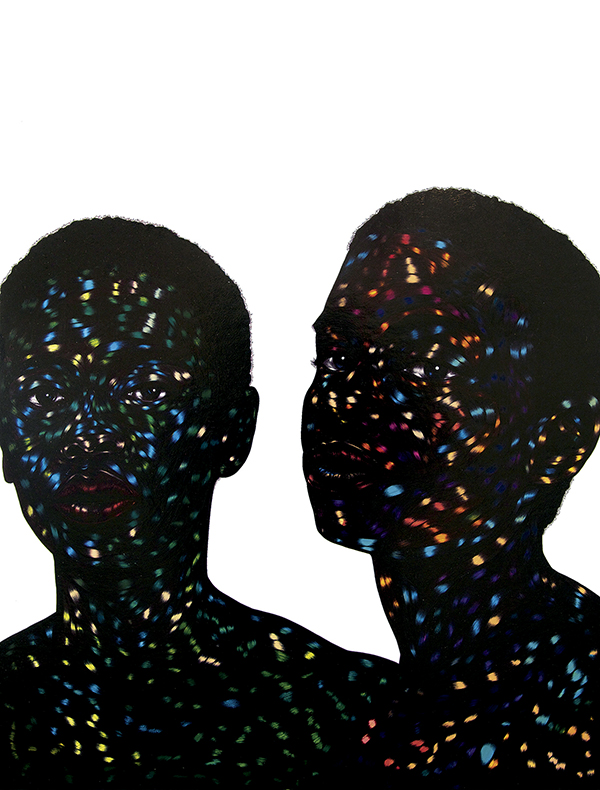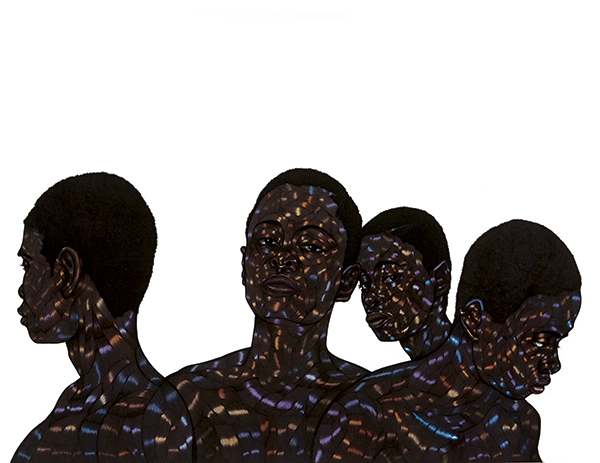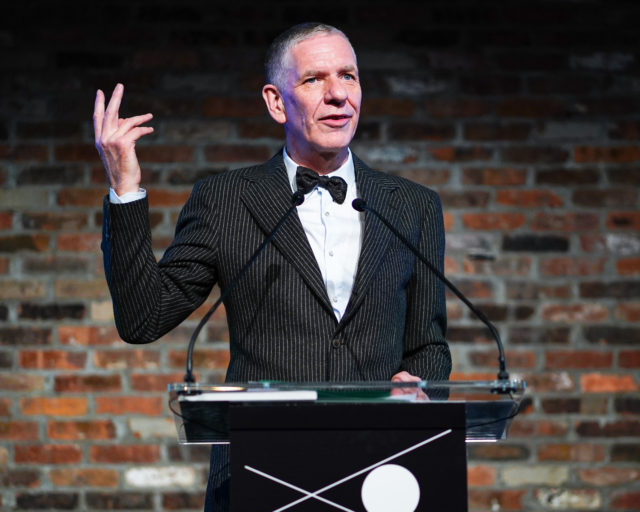A New Grammar for Blackness
Award-winning poet Claudia Rankine reflects on the intricate drawings of Toyin Ojih Odutola.
Toyin Ojih Odutola, I Wish You Would, 2011

© the artist and courtesy Jack Shainman Gallery, New York
Toyin Ojih Odutola’s drawings engage, destroy, highlight, and ultimately privilege a new grammar for blackness. Using black ballpoint, graphite, pastel, and charcoal, Odutola subordinates representation and fact telling to mark making and open-ended image construction. Before a face becomes a face, for example, we take in its shapes, tonality, and lines. Whose particular face we are traveling toward rarely is the point. Whether Prince Charles’s portrait or Odutola’s self-portrait, what matters is not the specific identity of the subject but the cumulative buildup of line that brings weight, complexity, and mobility to her images. It is here—in the line—that Odutola’s genius lives.
In Odutola’s work, the materials and the marks they make become primary. In her hands, portraits hand over their individuality and negate racial specificity. The marks themselves are what become ineffaceable. The dark line and its repetition reimagines terrain—marking and thereby making blackness unfamiliar as it accumulates into flesh to be read as racially significant or not.

© the artist and courtesy Jack Shainman Gallery, New York
Because Odutola’s own race is indisputable—she was born in Ile-Ife, Nigeria—the question of whether her portraits can be freed from the limited notion that black artists make “black art” seems to be Odutola’s private joke. Blackness, for her, is not only her subject; it is also her question. The space of blackness is itself the subject of her portraits. Historically, in a narrow read, blackness becomes unilaterally a signifier of race. But in Odutola’s work, race is there or it is not there, but its presence is never without our perceptions and projections. Blackness on the level of the line simply fills the terrain of the body with blackness.
Odutola’s portraits explore how to desegregate blackness from a fixed racial position and open it out to all the mythology, missteps, racism, beauty, and life that is held by the term, while still landing it within the free space of bodies. She engages blackness as a field of tonality. Her system of layering tones moves not toward the real but toward an alternative privileging of fluidity within the line. Individuals populate her portraits but remain in conversation with something less knowable than their presumed identity. To settle down her images, to name them, is to render them monolithic.

© the artist and courtesy Jack Shainman Gallery, New York
In all ways Odutola complicates the historical pull, in a white supremacist frame, toward blackness as “simply” a racial demarcation. She renders blackness as topography while offering it life in the form of figures. Her artistic project demands the preeminence of her mark, which, depending on the tool she employs, renders a peripatetic blackness.
Read more from “Vision & Justice” or subscribe to Aperture and never miss an issue.

























